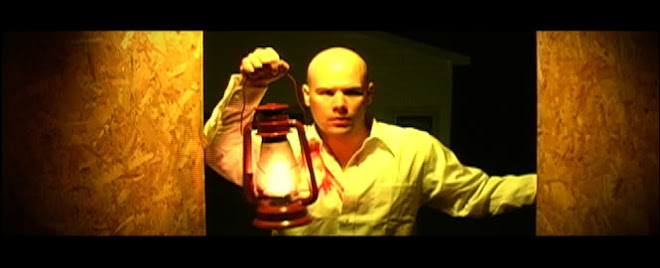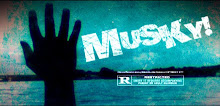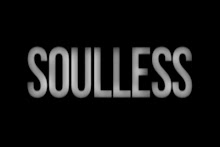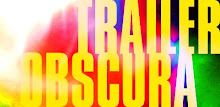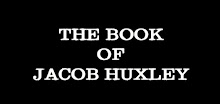Tuesday, June 28, 2011
MY FILM: First Review for Among the Fallen
Hey everyone. I'm here with a quick but substantial update on the progress of my film, Among the Fallen. I've just been informed that the first review for the film has just been posted up on the zombie film site, Zombie Movie Database.
Since this was my first feature film and the first time being reviewed, I had some fears that the vision of my film wouldn't be understood by anyone outside of my circle of friends, but it appears that my fears can be put to rest. I don't think I could have asked for a better review. I'm really looking forward to the film's premiere in October now when it is presented at the Eerie Horror Film Festival in Erie, Pennsylvania.
Well stay tuned for more reviews and updates for Among the Fallen as they come my way.
Zombie Movie Database - Among the Fallen Review
Labels:
Among the Fallen,
horror,
Jay Shatzer,
My Film,
My Projects,
zombies
Thursday, June 23, 2011
BOOK REVIEW: Book of the Dead
Book of the Dead
Writer: Jamie Russell
Published 2005
Writer: Jamie Russell
Published 2005
Jamie Russell's Book of the Dead: The Complete History of Zombie Cinema, is quite possibly the greatest zombie companion and film compilation in the history of the genre. Every iconic film that covers the grotesque walking corpses is covered in this book, ranging from its black and white voodoo origins to the magnificent resurgence brought on by George Romero and Lucio Fulci. The book has everything that any zombie fan would want and more. Russell also provides some amazing international poster art and lobby cards, displayed in all their colorful glory. You can tell that a lot of love went into creating this historical encyclopedia on cinema's most enduring mob of creatures, the zombie.
Russell first delves into the rich history of the genre, tackling the haitian origins that ignited tales of voodoo and reanimated corpses. He follows the flow of time on how these other worldly myths morphed into the stories that would later be told through the medium of the silver screen. Contrasting real life accounts of explorers trekking the Caribbean, Russell brings to light a rather straight foreword and clearly understood hierarchy of the zombie's birth and inevitable consumption of the masses. These wild stories would spark an interest that would spread across the globe and span ages on its hellish course to entertain the world over with tales of death and black magic.
His comparisons with Haiti, depression, and race and the way they effect the stories that were being told with the films of those times, are quite phenomenally addressed, giving the viewer another layer of explanation onto why we are so drawn to this disturbing genre of filmmaking. The reflections of society throughout the years and the resulting effects that these changes in the cultural span of things have birthed, is rather remarkable to have laid out in front of you and Russell does an excellent job in leading us through the history of it all. His writings and well thought out explanations provide a sort of cinematic road map into the inner workings of how these early zombie films were created the way they were.
I especially loved the sections dedicated to Val Lewton's films and the great deal of class that he brought to the genre. Russell focuses a great deal on comparing the highs and lows of the zombie film, never leaving a particular movement or stylistic choice from the equation as he gives us the whole picture on how the zombies popularity raised and lowered throughout its long run.
Russell gives us the blueprints to the roller-coaster ride that is the zombie film, by showing us the specific circumstances and the added elements that injected new life into the genre just as it seemed to wear out its welcome. Each time the genre waned, a new filmmaker or a different twist regenerated the concept of the walking dead, proving the cult stories staying power and public interest. These are all laid out beautifully by Russell as he goes over the various inclusions to the genre like the addition of Science Fiction elements to the invasion of the italian splatter scene.
There's also a great deal of coverage on the Romero years, showing the effects of that low budget effort in 1968 called Night of the Living Dead and the resulting ripple effect that helped stage one of zombie film's most impressive comebacks. Russell starts with the original Night of the Living Dead and then branches off to Romero's Dawn of the Dead, Day of the Dead, and Land of the Dead, sighting the director's correlations between society's political and social problems with the plague of the zombie menace. The chapters covering Romero's work are just outstanding, giving great detail on the contributions that the horror master has given to the genre and the overall effect he has had on the zombie movie since introducing us to Romero's zombie rule of thumb.
Moving further into the rich history of the zombie film, Russell covers the italian surge of splatter films that featured the walking dead as their main antagonist. Never holding back, much like the italian films he covers, Russell gives us some tremendously gory and vividly violent collages of movie stills to accompany his writing. The layout of these photo segments are simple, yet highly effective, focusing solely on the demented and decrepit nature of the genre. Some of my favorite spreads include the works of Lucio Fulci, depicting his highly surreal and violent zombie films, The Beyond and City of the Living Dead. The additions of these full page spreads in all of their colorful glory is greatly appreciated by this reader and gives us another reason to appreciate the visceral power of the genre.
Rounding out the book, Russell covers the boom of the do it yourself, camcorder movement, that gave birth to the independent zombie circuit. Examining the highs and lows of the era, Russell plunges into the thick of it leaving no stone unturned on his quest to best review the history of the zombie film as a whole. The low budget movement is a rather important moment in zombie cinema and Russell gives a respectable overview on the breadth of films that sprung from this resurgence of independent fan efforts. At the same time he tackles the Hollywood side of the subject, where action takes center stage and production values overshadow the more contemplative nature of the genre. It's interesting to see these two total opposites coexist at the same moment in time, but that is the real amazing thing about the zombie film and its wild historical ride through the cinema.
The closing portions of the book are dedicated to Russell's Zombie Filmography that consists of a comprehensive 80 page A to Z guide to the most significant zombie films ever made. Each entry is given a small write up that summarizes the film, focusing on the highlights of the movie. It's a wonderful way to end the book and I often find myself, from time to time, thumbing through the list of films, appreciating the great gamut of zombie goodness that there is in the world.
Jamie Russell's Book of the Dead: The Complete History of Zombie Cinema, really is the complete history of zombie cinema. It overviews all the factors that lead the genre to where it is today, allowing us to have an even greater appreciation for how far the zombie film in general has come. From its voodoo origins to its flesh eating gorefests, the zombie film is a beast of a genre that never seems to get its fill. Jamie Russell encapsulates all the things we crave for in the genre and allows us to follow the morphing of the walking dead throughout the years.
Splattered with amazing illustrations, movie stills, and countless facts, this book is the end all best damned zombie film compilation I've ever come across. The addition of the zombie filmography at the end of the book just makes it that much more complete, allowing us to really revel in the films we love so much. I demand that every zombie fan own a copy of this tremendous book, because it really is worth every damn penny. Pick it up today!
5 out of 5 stars The Definitive History of the Zombie Film!
Labels:
2005,
Book of the Dead,
Book Review,
horror,
Jamie Russell,
zombies
ALL THE COLORS: Suspiria
When it comes to colorful cinematic palates, the first thing that comes to mind is Dario Argento's 1977 masterpiece Suspiria. Oozing with fluorescent wonder, Argento depicts a colorful ballet academy run by a coven of witches and engages the audience by flashing every color of the rainbow across the screen throughout its runtime. It's beautiful to behold and it creates a charged atmosphere that pushes the film into fantastic new realms.
When selecting my images for this segment, I found myself going a little overboard when collecting the stills. There are so many richly conceived images in this film, that it really is impossible to narrow down the overall breadth of visual work put into this film down to just a few well composed shots. So let's just get right down to it. Here's a handful of glorious shots from the italian horror masterpiece, Suspiria. Hot damn I love this movie!
Labels:
1977,
70's,
All The Colors,
Dario Argento,
horror,
italian,
Suspiria
REVIEW: Hercules in the Haunted World
Hercules in the Haunted World
Director: Mario Bava
Year 1961
Hercules in the Haunted World is a visually intense Peplum that relishes in the vibrant and fantasy infused colors, concocted by the one and only Mario Bava. The film centers around two muscle bound characters, Hercules and Theseus, as they venture into the underworld in order to awaken Hercules' love Princess Deianira from a hypnotic trance that threatens to claim her life and strip her of the throne. Can Hercules and Theseus survive the horrors of the underworld, or will their good intentions unleash something far more disastrous unto the world? Either way be prepared for a wild ride.
 |
| See they're laughing, they're having a good time. |
Fantastically directed by Mario Bava, the legendary italian director most known for his iconic horror films like Black Sunday, The Whip and the Body, Black Sabbath, Kill Baby, Kill, and Blood and Black Lace, Hercules in the Haunted World showcases a plethora of mythological elements all fabricated and bathed under a kaleidoscope of colors. Filmed to perfection by the accomplished italian filmmaker, it's hard to imagine what the film would have looked like in any other directors hands. It's safe to say that Bava had a style all of his own and he let that splendid eye for imagery dictate the atmosphere of Hercules world, both in the realm of the living and the world of the dead.
The striking distinction between the two habitats is like night and day, but he still manages to balance both locations enabling the cast of characters to feel at home in both worlds no matter how diverse the living situations. It's classically done and even though we are bombarded with some rather supernatural and fanciful things, we never feel out of place in this euphoric plain, making it all the more clearer that Bava is what makes this film truly unique and a beast of its own.
 |
| Christopher Lee, you naughty little monkey. |
Of course Bava had a great deal of help from his cast, first and foremost Reg Park as Hercules. Not only did he have the physique for the role, but he also carried a great deal of charisma that helped mold him into a more sympathetic character. What could have been a hollow, muscle-bound, and wooden performance, is instead transformed into a conscious and selfless representation of Hercules by Mr. Park. I really enjoyed his interpretation of the larger then life character and I felt that he gave the role a certain amount of weight that might not have been present if someone else had taken the reigns. Watching as the goliath Hercules struggles with moral decisions while at the same time battle with such determination through the terrors of the underworld, made for a highly entertaining ride that was a whole hell of a lot of fun. Reg Park was able to tackles both sides of the coin and should be commended for such a feat.
 |
| Everyone loves Hercules. |
 |
| God I hate this haunted world. |
Also the role of Theseus, Hercules' companion, brought another yet different quality to the film. More of a womanizer and scoundrel, George Ardisson's Theseus provided more of a mischievous nature to the story. When we first meet Theseus, he is literally rolling in the hay with a recently unengaged woman without a care in the world, that is until he is ambushed by a group of men hired to take out both himself and Hercules. With a great deal of show Theseus thwarts the attack, sending his assailants crashing to the ground as he seems to thrive on the action of the moment. Ardisson almost plays him as an action junky, always looking for his next test of strength or conquest in both the battlefield and the bedroom. He makes for the perfect partner to Hercules, who is more of a focused warrior only looking for a resolution to the problem and never seeking it out for the sheer thrill of it.
The undeniable contrasts of Theseus' passion for the spontaneous and Hercules' sensible approach to both love and life, comes crashing to a head in the second half of the film, providing a very memorable moment between the two friends. Ardisson's role in portraying that other half of the friendship is key to making it believable to the audience. The energy he brought to the role matches the passion that flows through Theseus' veins and that's really all you can ask in such an important supporting character and actor.
 |
| Last one up is a monkey's uncle! |
 |
| I'm getting to old for this shit. |
The antagonist for this fearsome duo is a power hungry and deceptive man named King Lico, played by the one and only Christopher Lee. Blinded by his lust for power, Lico entraps his niece in a hypnotic stupor, thwarting her from taking the throne and ruling the kingdom. As usual Lee is wonderful, giving that subtle yet overpowering performance that has permeated throughout his career and created more memorable characters then one can count. His presence is always intense and he carries it beautifully, leaving the viewer with a foreboding notion that this man is a walking talking poison guided only by his quest for the throne. I loved every minute he was on the screen, including his final confrontation with Hercules as they battle on top of a mist covered and moonlit hilltop ruin. The sequence is mesmerizing and it beautifully caps off this wonderful film.
 |
| You want me to do what?!?! |
 |
| Oh Hercules... I can't stay mad at you. |
The real meat and potatoes of this film is in the exquisite set design and model work. Never has the world of the underworld been so haunting and vividly reconstructed, capturing that creepy atmosphere and archaic wonder that really propels this film above and beyond its fellow Peplum companions. It's such a vivid portrayal too that one can't help but get swept up in the fantasy of it all. From the gnarled and twisted tree that Hercules has to scale, to the blood vine forest, to the lava filled caverns of the underworld, this film really does pack a visual punch. Even outside of the haunted realm of the underworld, Bava manages to spruce up the color and make it visually pleasing.
This is most prevalent during the night time scenes where we are given a surreal color scheme of purples, greens, and blues, that light the corridors and pillars of the palace. It's the most unnatural look one could imagine, but placed within the context of Bava's already established world, it works and works wonders. If there's one thing you can say and come away with, it's that this film is one of the most visually striking Peplums to ever be created.
 |
| Where in the hell am I? |
 |
| I have the POWER!!!! |
Hercules in the Haunted World is an imaginative film full of wonderful sets, glorious imagery, and interesting characters. The world is alive and full of life, made in part by the awe-inspiring design of the production team and the always appreciated cinematography of Mario Bava. Reg Park incapsulates the heart and soul of Hercules, giving the character a larger range then most give the icon credit for, while George Ardisson thrives as Theseus. To top it off you have the always consistent and highly engaging Christopher Lee as the main villain, who absolutely elevates the severity of Hercules' quest. All in all this film showcases the epitome of Peplum films, giving us the familiar staples of the genre, but adding a little twist to the proceedings that breathes new life into the formula. I highly recommend this film to Peplum fans and any followers of the late great italian master Mario Bava.
5 out of 5 stars Mario Bava's Peplum Masterpiece!
Saturday, June 11, 2011
ALL THE COLORS: Hercules in the Haunted World
Hey everyone. Just added another new segment called, All The Colors, which will be an ongoing series that showcases some of cinemas most mesmerizing visual compositions and just plain outlandish color schemes. I'll be displaying these films by way of a handful of images that best show off the selected film's visual flare.
First up at bat is the wonderful Peplum, Hercules in the Haunted World, directed by the legendary Mario Bava. This film is so lush and overflowing with color that it will make your retinas burst. I really can't do the look of the film justice by describing it, so just sit back and feast your eyes on this sweet masterpiece. Full review coming soon.
First up at bat is the wonderful Peplum, Hercules in the Haunted World, directed by the legendary Mario Bava. This film is so lush and overflowing with color that it will make your retinas burst. I really can't do the look of the film justice by describing it, so just sit back and feast your eyes on this sweet masterpiece. Full review coming soon.
Labels:
1961,
60's,
All The Colors,
Hercules in the Haunted World,
Mario Bava,
Peplum
Subscribe to:
Posts (Atom)

